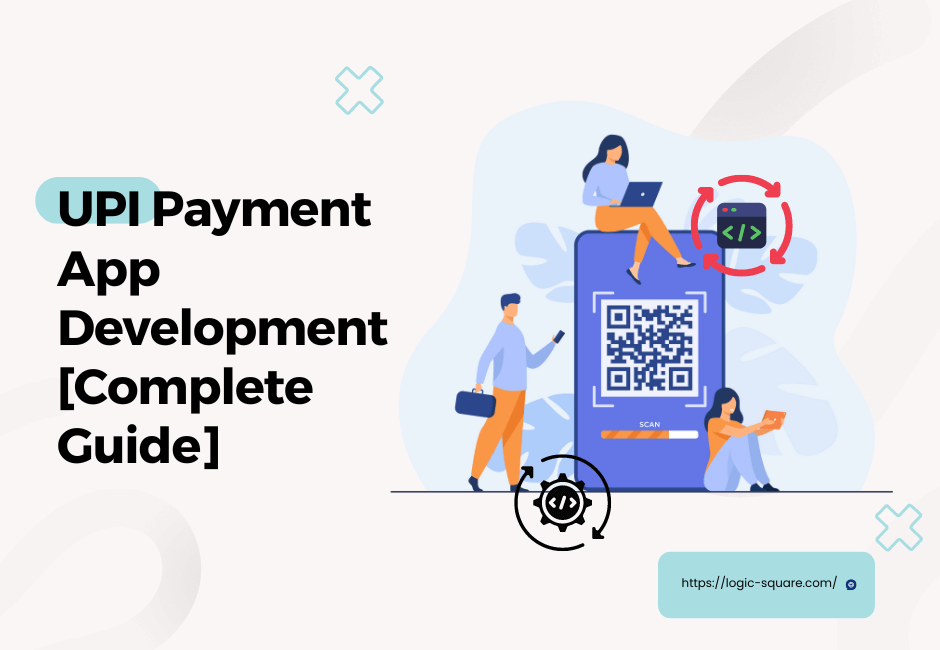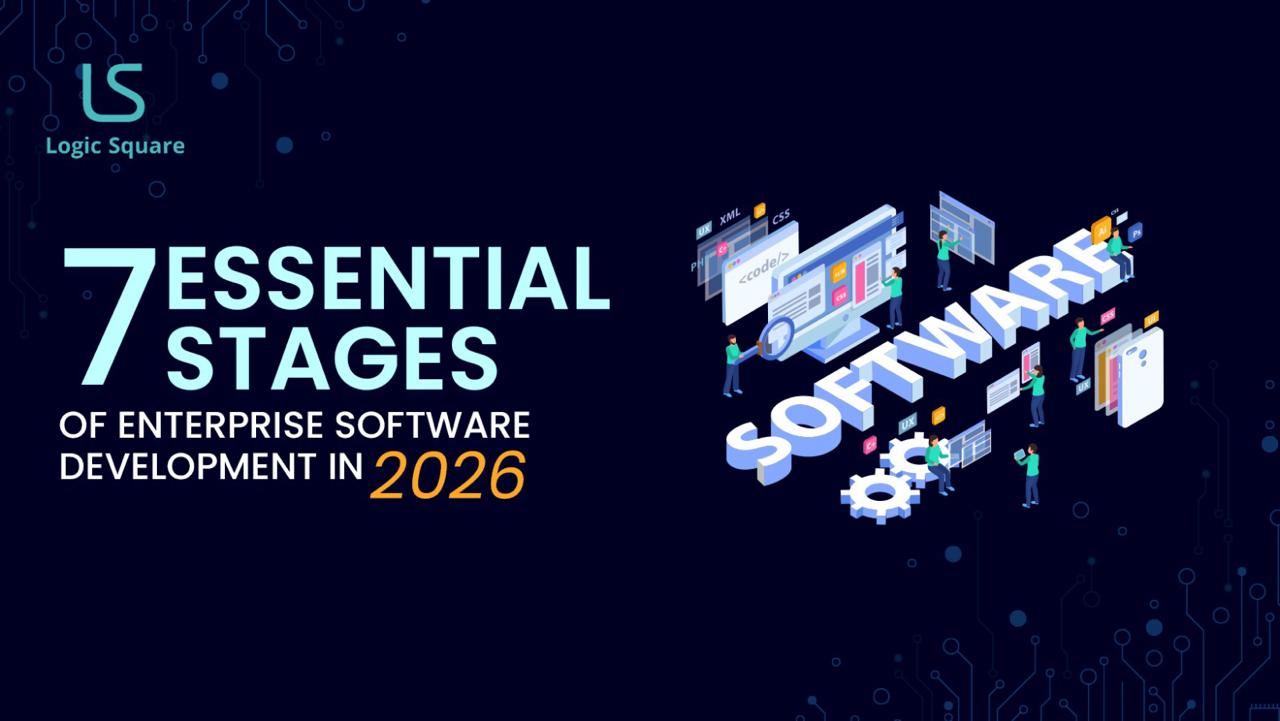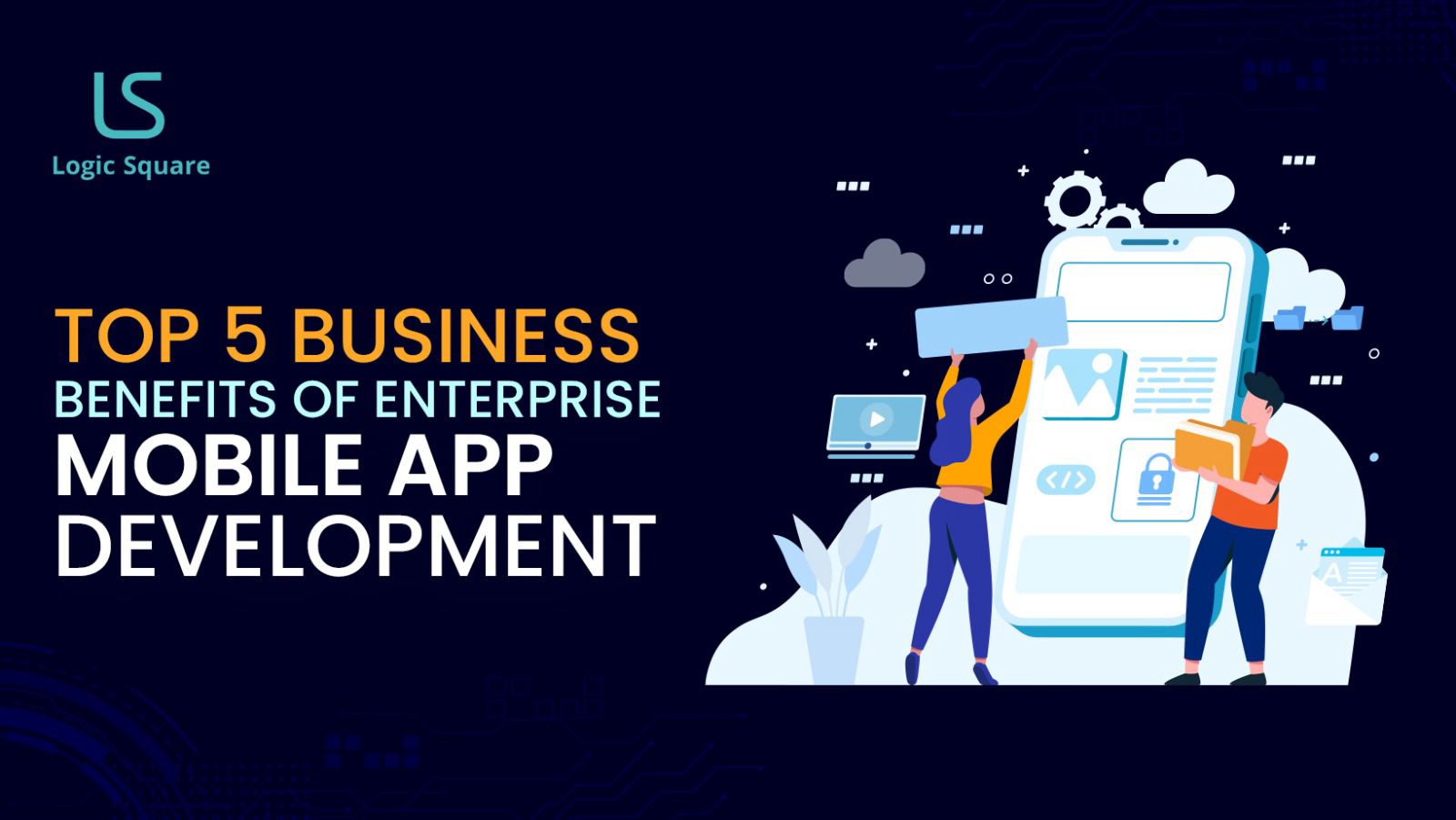The introduction of the Unified Payment Interface (UPI) has completely transformed the global digital payment system by facilitating real-time peer-to-peer fund transfers. The UPI has entirely transformed the Indian digital payment landscape and is all set to take over the international arena. It has become a global sensation after its grand launch at the iconic Eiffel Tower in Paris, France. At present, over 260 million people from different companies in the Indian market use UPI apps in just 7 years of its inception. In addition, in April 2024 alone, the transaction volume crossed $14,035 million for the first time. The UPI integrates and merges multiple banking accounts and banking and transactional features, facilitating seamless fund transfer and merchant payments in real-time.
Across India and the world, businesses and enterprises looking to invest in building FinTech solutions, UPI has become the number 1 choice for them. Developing a UPI payment app offers businesses a strategic opportunity to tap into this burgeoning market, promising significant advantages such as enhanced customer engagement, increased transaction volumes, and streamlined payment processes. So, if you are on your way to making a UPI app brand, you are in luck. This article explores the critical components of UPI payment app development, analyzing the financial outlay, technological requirements, regulatory compliance, and the long-term benefits that can redefine business growth in the digital age.
Table of Contents
ToggleUnified Payment Interface – The Story Of Impressive Growth & Usage Statistics:
Introduced in 2016 by the National Payment Corporation of India (NPCI), UPI had a modest beginning, with only 0.09 million transactions in its first three months and 21 banks onboard. Despite its slow start, UPI’s rapid adoption has transformed it into one of India’s fastest-growing digital payment solutions. Today, UPI boasts around 598 banks and facilitates transactions worth over $20,000 billion. This groundbreaking initiative by NPCI, in collaboration with the Reserve Bank of India and IBA, has gained international acclaim.
Currently, seven countries, including Sri Lanka, Mauritius, France, UAE, Singapore, Bhutan, and Nepal, have adopted UPI, solidifying its position as a leading digital payment method globally. In addition, prominent countries like Australia, Canada, Hong Kong, the UK, Germany, and many others have acknowledged and embraced UPI payment services originating from India.
The growth story of UPI mobile apps is also marked by the growing number of key third-party payment providers who have built their own UPI mobile apps, such as Google Pay, PhonePe, Paytm, Amazon Pay, Creed, and many others. According to industry experts like Sunil Rongala, UPI’s massive success will continue in the future and incorporate more global participants along the way.
How A UPI App Works?
The unprecedented speed, security, and convenience of the UPI app has entirely revolutionized transactions and payments in India. With the help of a UPI app, users can do multiple transactions from a mobile app. The functions of a UPI app are unique and innovative. It facilitates real-time inter-bank transactions, especially multiple transactions and payments.
Users can download any UPI app from the Play Store, like BHIM, Google Pay, or PhonePe, and link their bank accounts by authenticating them through their registered phone numbers. The process helps them create a virtual payment address unique to their UPI user account. Any transaction on UPI is facilitated by the Immediate Payment Service (IMPS), ensuring 24/7 availability and real-time processing.
When initiating a transaction, the user inputs the recipient’s VPA and mobile number or scans a QR code and specifies the transfer amount. The app then connects to the National Payments Corporation of India (NPCI), which acts as the central switch, routing the transaction between the payer’s and payee’s banks. Authentication of the transaction is enforced through a UPI PIN, which is securely managed by encryption algorithms and device-binding technologies to prevent unauthorized access.
The payer’s bank verifies the UPI PIN and sends a request to the NPCI, which then forwards it to the payee’s bank for final approval and fund transfer. This process involves multiple entities, including the payer’s bank, payee’s bank, NPCI, and the RBI, ensuring regulatory compliance and security.
What Makes UPI Different From Other Digital Payment Solution?
Many digital payment solutions facilitate seamless, rapid transactions. So, what is so special about the Unified Payment Interface?
The answer lies in its ability to facilitate fund transfers or transactions from one bank account to another in real-time. It means that UPI mobile apps do not require any e-wallets or KYC verification process to facilitate peer-to-peer fund transfers, saving a lot of time and hassle. In addition, unlike some e-wallet digital payment solutions that operate within their closed ecosystems, UPI works for all participating banks, ensuring that users can send and receive money to and from anyone with a UPI account or ID, irrespective of their banks.
| Feature | UPI | Other Digital Payment Solutions |
| Interoperability | Works across all participating banks | May be limited to specific wallets |
| Adding Beneficiary | Not required for some transactions | Often required for sending money |
| Transaction Type | Direct bank transfer | Transfers may involve wallet balance |
| Network | Decentralized | May be centralized (specific wallet provider) |
| Focus | P2P transactions | May be broader (includes bill payments, shopping, etc.) |
| Security | Multi-factor authentication | Security practices may vary |
| Transaction Costs | Potentially lower for small transactions | May have higher fees |
Top Leaders Of UPI Market:
| TPA Name | Potential Market Share (Approx. May 2024) | Estimated Users (in Millions) | Transactions per Month (Est.) | 2023 Revenue (Est.) in USD |
| PhonePe | 48.87% | 300+ | 6.5 Billion | 29.14 Billion |
| Google Pay | 35% | 250+ | 5 Billion | Over 70 Billions |
| Paytm | 12% | 180+ | 2 Billion | 79.91 Billions |
| Amazon Pay | 3% | 40+ | 0.5 Billion | 20.93 Billions |
| BHIM | 1% | 15+ | 0.1 Billion | 864 Million |
Essential Features & Functionalities Of A UPI Mobile App:
UPI mobile apps, offered by various Third-Party Applications (TPAs) like PhonePe, Google Pay, Paytm, etc., share some core functionalities that leverage the UPI platform. Here are some essential features and functionalities to look for in a UPI mobile app:
- Signup and account linking: Users can easily create an account on the UPI app and link their bank accounts for seamless transactions. The app allows users to see all linked bank accounts and their balances in one place.
- Send and request money: Users can send money to friends or family members by entering their UPI ID or mobile number. They can also request money from others by using their UPI ID or phone number.
- QR code scanning: Users can scan QR codes to make payments at merchant stores or to other users. In addition, users generate their own QR codes for others to scan and send them money.
- Transaction history: The app provides a detailed transaction history showing all previous transactions made by the user. This history includes the date, time, amount, sender/receiver details, and total spending status over time.
- Security features: UPI apps come with multi-factor authentication, PIN protection, device binding, and other security features to ensure safe and secure transactions. In addition, you can set transaction limits for added security.
Additional Features – (Depending Upon The Third Party App You Are Using For UPI Transaction):
- Split bills with friends easily.
- Invest in mutual funds or other financial instruments directly through the app (offered by some TPAs).
- Manage travel bookings or movie tickets (offered by some TPAs).
- Offer/Redeem cashback or rewards points on transactions (offered by some TPAs).
- Overdraft Facility
- Multi-Language Support
Technology Stack Choices You Have To Build Your UPI Mobile App:
| Component | Options | Considerations |
| Front-End Development | ||
| Programming Languages | Kotlin (Android) Swift (iOS) | Native languages for optimal performance and user experience. |
| Frameworks | Jetpack Compose (Android) SwiftUI (iOS) | Modern UI frameworks for building visually appealing and responsive interfaces. |
| Cross-Platform Frameworks (Optional) | React Native Flutter | Can be used for faster development time and a single codebase for both Android and iOS, but may have some performance compromises compared to native options. |
| Back-End Development | ||
| Programming Languages | Java Python | Java is a popular choice with established libraries for UPI integration. Python is gaining traction due to its readability and scalability. |
| Frameworks (Optional) | Spring Boot (Java) Django (Python) | Can provide structure and efficiency for building robust server-side logic. |
| Database | Cloud Firestore MySQL | Cloud Firestore offers scalability and real-time data synchronization. MySQL is a mature and reliable option for relational data storage. |
| API Integration | NPCI (National Payments Corporation of India) | Essential for integrating with the UPI network for sending and receiving payments. |
| Security | ||
| Authentication | Firebase Authentication AWS Cognito | Secure user login and data protection using industry-standard authentication services |
| Encryption | Industry-standard encryption protocols (e.g., AES-256) | Secure storage and transmission of sensitive user data like UPI PINs and bank account information. |
Apart from the above, there are some additional tools and platforms that you can use depending on the functionalities and scopes of your UPI mobile app.
- Push Notifications: Firebase Cloud Messaging (FCM) or Amazon Simple Notification Service (SNS) for real-time updates and transaction alerts.
- Analytics: Firebase Analytics or Google Analytics for tracking user behavior and app performance.
- Additional Payment Gateway (Optional): This may be needed for further payment processing functionalities beyond UPI.
UPI Payment App Development Process:
Today, the number of countries that accept UPI payment solutions is rising at a rapid speed. As a result, businesses across the world are increasingly interested in building their own UPI applications. However, creating a UPI app is a complex and challenging process, and it requires extensive skills and expertise to pull this off. Like any app development, UPI mobile app development also goes through the following steps.
- In-Depth Market Research
- Hire An Experienced UPI App Development Company.
- Project Analysis.
- Budget Estimation.
- Choose The Technology Stack
- UI/UX Design
- MVP Development
- Testing & Maintenance
How Much Does It Cost To Build A UPI App?
Building a UPI mobile application can range in cost from $30,000 to around $3,00,000, depending on the complexities and functionalities you prefer for your UPI app. Certain common factors like app design, developer location and expertise, choice of the tech stack, third-party integrations, and project time can affect the cost of developing a UPI mobile app. But more importantly, the features you choose will impact the UPI mobile app development cost more than anything.
Here’s a breakdown of UPI app development cost based on the app’s features and complexities.
Basic Money Transfer App-Basic Features & UI (Low Complexity – $30,000 – $75,000)-Estimated Time [4-6 Months]:
- Core functionalities like sending and receiving money via UPI IDs and QR codes.
- Limited features like transaction history and basic profile management.
- It is a good starting point for a simple P2P payment solution.
Medium Complexity App-Moderate Operability With Essential Features (Mid-Range – $75,000 – $150,000)-Estimated Time[6-10 Months]:
- Includes features like bill payments for utilities, mobile recharge, etc.
- May offer split bill functionality for convenience.
- Provides a more comprehensive money management experience.
Advanced Feature: Rich App-UPI 2.0 Apps With Ultra Advanced Features (High Complexity – $150,000-$3,00,000)-Estimated Time [More Than 10 Months]:
- Integrates bill payments for a wider range of services.
- It might offer investment options like mutual funds or micro-investments.
- It may include in-app purchases for additional services or subscriptions.
- Provides a complex and feature-rich financial management platform.
Why You, as an Entrepreneur, Should Build a Third-Party UPI App?
Building a UPI mobile app offers a wide range of benefits that include paying bills and transferring funds within a few seconds. Users can send and receive money from anywhere and at any time. These benefits have a profound impact on industries and individuals and help them streamline their finances. But why should you, as a business owner, consider investing in a UPI app? Here are the reasons why you should build a UPI third-party app:
#1 Growing Market Demand: As more businesses open up toward digital payments, the demand and interest for UPI apps are growing rapidly around the globe. By building a UPI app, you can enter this growing market and create a broad user base early before the market gets crowded.
#2 Revenue Generation Potential: UPI apps can generate a significant amount of revenue through various streams, including transaction fees, premium features, merchant partnerships, and advertisements, creating multiple monetization opportunities for your brand.
#3 Ecosystem Integration: A UPI app can integrate with various financial services, e-commerce platforms, and other business solutions, creating a comprehensive ecosystem that offers added value to users. Furthermore, entering into strategic partnerships with multiple business verticals allows you to increase your revenue streams and brand image.
#4 Reduced Transaction Costs An Added Advantage To Onboard More Users & Save Costs: Compared to traditional payment methods like credit cards, UPI transactions often have lower processing fees. It can translate to more users for your app while saving costs to ensure a more significant profit margin.
#5 Data-Driven Insights: You can use and leverage the transaction data received from your UPI to evaluate your customer behavior and spending patterns. Obtaining this data can help you personalize your offerings, make your marketing and promotional campaigns more efficient, and give a refined edge to your overall business strategy. If you wish, you can diversify your business in the future based on these insights.
#6 Future-Proofing Your Business: As UPI adoption continues to grow in India and prominent countries around the world, offering a UPI payment solution becomes almost essential for businesses across industries to remain competitive and agile. Therefore, building a UPI app places your business well for the future of digital payments.
How Logic Square Technologies Can Help You Build A Third-Party UPI App?
Do you have a burning desire to build a third-party UPI app and become an early entrant in this relatively new digital payment field? Logic Square Technologies can help you out. We have an experienced app development team that can help businesses build innovative digital solutions for both mobile and web platforms. We leverage the latest technology while keeping ourselves updated with the latest trends in the tech field.
Our ability to conceptualize and market-fit your vision makes us one of the leading UPI app development companies in the USA and India. From creativity and planning to robust deployment, we build UPI apps that facilitate seamless, secure, and efficient transactions. So what are you waiting for? Join hands with Logic Square Technologies and get ready to explore the future of digital payment solutions.
Final Words
UPI app development is a complex and challenging task for any business initiative. It is a relatively new technology phenomenon that will likely stay in our daily lives for the foreseeable future. The use of UPI mobile apps will likely increase in the future, and for any business organization that wants to invest in this sector, this is the perfect time. Hopefully, this article will provide you with sufficient insights about building a UPI app and the benefits it can offer for your app entrepreneurship.
However, to make a third-party UPI app, you need the assistance of a reliable UPI app development company that can help you scale your venture. That’s where Logic Square Technologies comes in. It can help you build a cutting-edge UPI app while staying focused on your business goals and visions. For more information, reach out to https://logic-square.com/.





